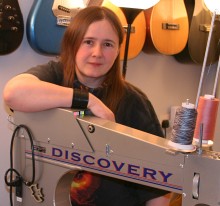This is the view from the bell tower of the Church of St. Nicholas in Malá Strana, looking out towards the old town and Charles Bridge:

This is the view from the same tower looking in the opposite direction, back towards Petřín hill:

This one is the view from Charles Bridge, looking north:

Here's one of the bridge itself, from the riverside:

This is another view of Petřín hill, this time take from the castle:

Finally, here's one looking over the Vltava towards Josefov, the Jewish quarter, taken from the Prague metronome.






7 comments:
Wow, really beautiful, thanks for sharing these.
Nice job on editing the pictures. Thanks for posting them. World travel is not in my future forecast. My cat has CRF and needs me (I need her too) and my Cardigan-WC is 10 months post IVDD surgery. My adventures are going to be on my XT225 Yamaha my husband bought me for Christmas. Someday I will blog. I have a Nolting HobbyQuilter on a B-Line frame. Ferret you inspire me! I am old enough to be your mom though.
Cari J in Calif
Such gorgeous photos Ferret...don't you feel a quilt coming on?! :o)
Great panoramas. I must check out the software link and find out how to work it! Compared with my old-fashioned panoramas, where I just go for the same kind of look we used to do at art college with a heap of 6 x 4 prints and some glue, they are so much more streamlined - does the software auto balance the images first? Also, what lens are you using? 28mm?
I love panoramas - I had an Olympus panorama camera way back but alas the electrics gave up and weren't replaceable.
You take each pair of images and mark common points between the two. Thus you might point out that the top of a spire on a church in both photos, which tells the software how they should be aligned. Do that with 4 or 5 points for each pair, and the software does the rest. Of course, there are no end of ways to manually fiddle with the settings to govern things like the amount each picture is distorted to get it to fit, and the way the two are blended together, but these ones were all just done using the default settings. Obviously, for larger panoramas you use multiple images instead of just two, but the same principle applies. Just mark the common points on the pictures, and let it do the rest.
I forgot to say, these ones aren't perfect. For example, if you look at the sky in the one from the bell tower looking towards Petřín hill, you can see blue and grey banding. That's where the camera has chosen different exposures for the images, and the software has blended the two together, so the sky looks different colours depending on the colour it came out in that particular source image. That's the sort of thing that can be tweaked manually. If it was intended for print, it would probably have been worth it, but for posting on a blog, just going with the defaults and living with the banding seemed the least effort option.
The camera was a Fuji F200EXR, and the pictures in question mostly had a 6.4mm focal length (which it reckons is equivalent to 29mm on a 35mm lens). The ones from the metronome had an 11.0mm focal length (equivalent to 50mm). We have some more taken with an EOS350D, but haven't made them into panoramas yet.
Hi Tet, thanks for all the info. Sounds alot easier than cutting out images myself. Will give that software a try, when I have time to play!
Post a Comment